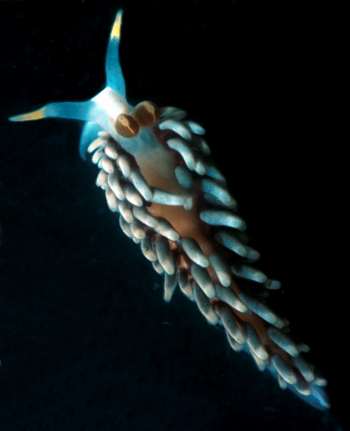
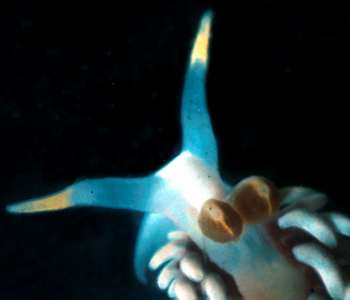
Babakina caprinsulensis
Miller, 1974
Order: NUDIBRANCHIA
Suborder: AEOLIDINA
Family: Glaucidae
DISTRIBUTION
Known only from New Zealand
PHOTO
Holotype. Goat Island Bay, Leigh, North Island, New Zealand. 1 August 1965. 17 mm long alive. Under stone in sub-littoral fringe. Photo: M.C. Miller.
Aeolid with fairly broad body and distinct ridge separating dorsum from the sides. The foot is narrower than the body, and is only visible from above at the head end, where it widens and extends out on each side into tentacular foot corners. The oral tentacles have a wide base and taper to a rounded tip. The rhinophores have a very short stalk and a combined raised basal trunk. The rhinophore clubs are large and covered with papillae, except for a smooth anterior and posterior midline and rounded terminal knob. The cerata are arranged along each side of the body. Miller describes the arrangement as ' six clusters' but any clear pattern is difficult to see.
The body wall is transparent or transplucent with the whitish viscera showing through. There is a broad opaque white band on the head running from the anterior edge back to the rhinophores, and there is a narrower median white stripe from the posterior-most cerata to the posterior tip of the foot. The dorsal surface of thebody and the sides of the head are speckled with purplish pink. The upper third of each oral tentacle is bright yellow, and the rest is translucent clear. The papillate part of the rhinophore club is orange brown, and the tip, at least in the holotype, was bright yellow. The cerata are translucent with the dark brown digestive gland showing though the ceratal wall, which is covered with a dusting of opaque white. Each ceras has a broad subterminal yellowish band.
Miller, considers this species differs only slightly from Babakina festiva (Roller, 1972) originally described from California. Examples of similar animals from Japan and elsewhere are described on the Forum under Babakina cf. festiva. It is possible that all these are geographic variants of a single species. In Miller (1974) the species description is named Babaina caprinsulensis but there is a footnote noting that Babaina Roller, 1972 is preoccupied and has been replaced by Babakina Roller, 1973. This 'internal correction' allows the name to be cited as Babakina caprinsulensis Miller, 1974. The name caprinsulensis is derived from the Latin words for Goat Island, where it was found.
- Miller, M.C. (1974): Aeolid nudibranchs (Gastropoda: Opisthobranchia) of the family Glaucidae from New Zealand waters. Zoological Journal of the Linnean Society, 54: 31-61.
Rudman, W.B., 2005 (March 22) Babakina caprinsulensis Miller, 1974. [In] Sea Slug Forum. Australian Museum, Sydney. Available from http://www.seaslugforum.net/find/babacapr
Related messages
Babakina caprinsulensis from New Zealand
September 10, 2007
From: Ian Skipworth
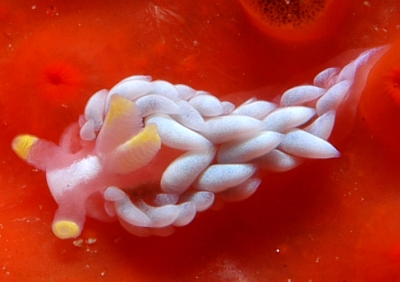
Hi Bill
Here's Babakina caprinsulensis from the Poor Knights. This is only the second time I've found it. I thought I'd send you the pic because my previous find of this slug seemed to generate some interest and this one's colouring is a little different.
Locality: Poor Knights Islands, 15 metres, New Zealand, Pacific Ocean, 02 September 2007, Rocky reef. Length: 8mm. Photographer: Ian Skipworth.
Cheers
Ian
ianskip@xtra.co.nz
Skipworth, I.R., 2007 (Sep 10) Babakina caprinsulensis from New Zealand. [Message in] Sea Slug Forum. Australian Museum, Sydney. Available from http://www.seaslugforum.net/find/20676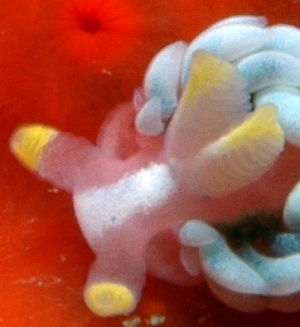
Dear Ian,
Any find of this species and all the other animals I have lumped under Babakina cf. festiva is of interest because I suspect they are all colour forms of the same species. The white band on the head of your animal shows simialrities with specimens from Bahamas, Spain and Brazil. What they all have in common is the way their rhinophores share a common trunk.
Best wishes,
Bill Rudman
Holotype of Babakina caprinsulensis
March 23, 2005
From: Bill Rudman
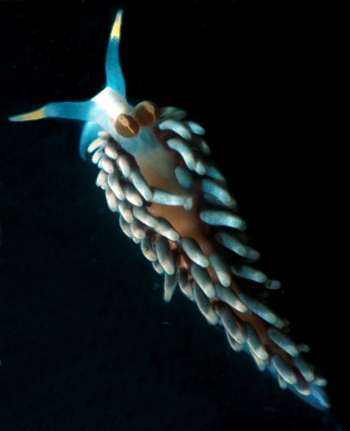
Michael Miller has kindly lent me a set of photographic slides of New Zealand nudibranchs, including the type species of most of his new species. I will be gradually posting these on the Forum.
Here is the Holotype of Babakina caprinsulensis Miller, 1974.
Locality: Goat Island Bay, Leigh, North Island, New Zealand. 1 August 1965. 17 mm long alive. Under stone in sub-littoral fringe. Photo: M.C. Miller.
Best wishes,
Bill Rudman
Babakina caprinsulensis from New Zealand
March 23, 2005
From: Ian Skipworth
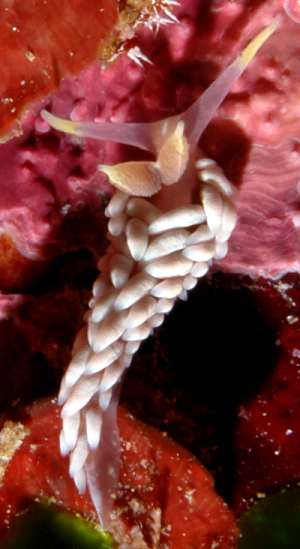
Hi Bill
I can't remember seeing one of these before but I'm sure you'll know what it is. As always, your comments would be much appreciated.
Locality: Poor Knights Islands, nthn New Zealand. Depth: 12 m. Length: 10 mm. 19 March 2005. rocky reef. Photographer: Ian Skipworth.
Cheers
Ian
ian@ianskipworth.com
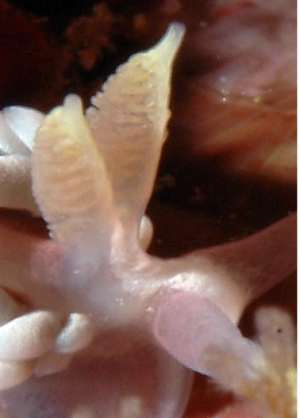
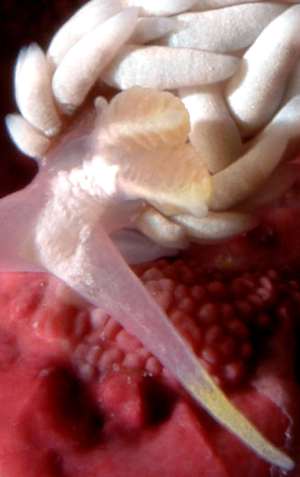
Dear Ian,
This is a nice find. It is Babakina caprinsulensis, which was described from nearby Goat Island some years ago by Michael Miller. I recently visited Michael in Auckland and he kindly lent me a set of slides of New Zealand species to post on the Forum, including one of the specimen from Goat Island he used to describe and name this species. So I have taken the opportunity to post his photo [#13349] as well as your message. If you look at the messages attached to the Babakina cf festiva Fact Sheet you will see that there are records of similar animals from the NW and NE Pacific and the Atlantic and Caribbean It is possible they are all one species. One apparent difference in the New Zealand species was that the rhinophores were described as papillate. However your photos suggest they are lamellate, just like typical B. festiva. Sometimes when animals are preserved it is difficult to be sure of some details such as the nature of rhinophore elaborations. Certainly in the photo of the holotype it is not possible to determine whether they are lamellate or papillate. This is an interesting find. The most characteristic external character of Babakina is the way the rhinophores stalks are fused into a single broad trunk.
By total coincidence, while preparing your message, I have received a message [#13404 ] from Dong Bum Koh, from South Korea with photos of Babakina festiva, so I will post that as well. The day is turning into a Babakina festival!
Best wishes,
Bill Rudman
